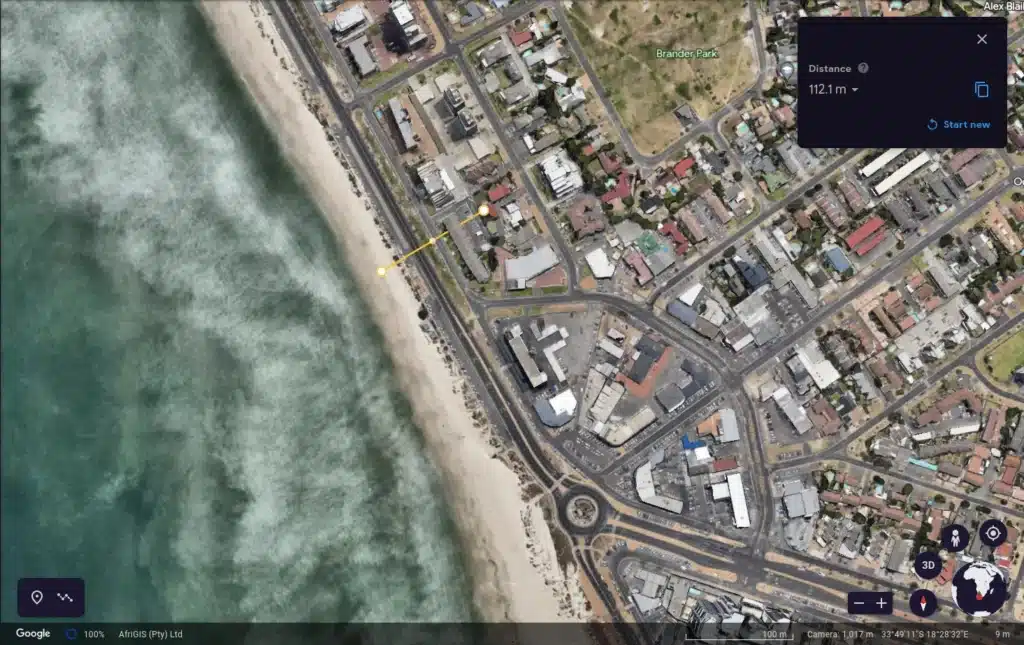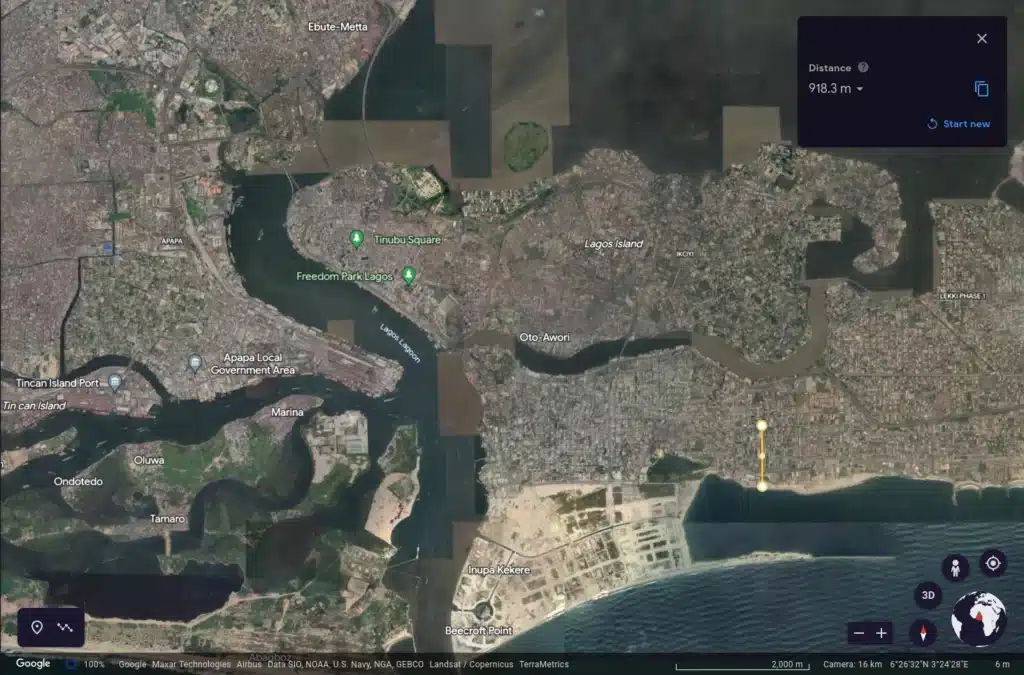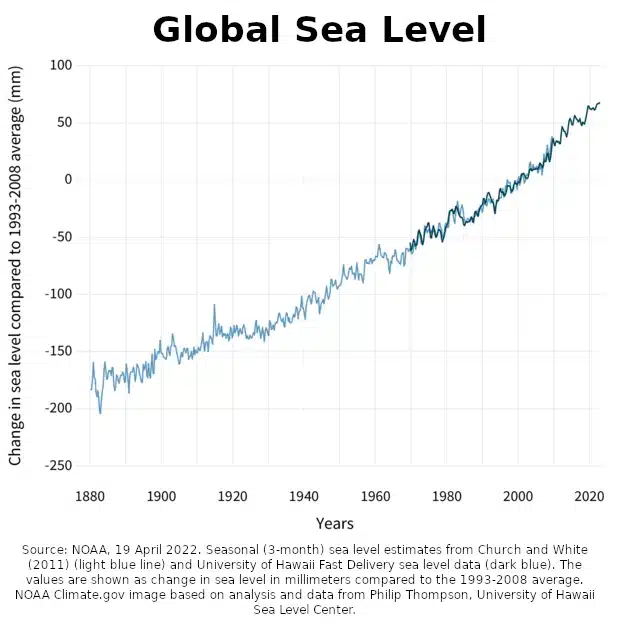The alarmists at Daily Maverick reckon Bloubergstrand will lose more than 100m of its beach by the end of the century.
Built on incredibly shaky ‘research’, or rather, prognostication, the readers of Daily Maverick were recently treated to a new fearmongering factoid. Bloubergstrand Beach outside Cape Town, it reported, could lose its shoreline by the end of the century.
For all those who still intend to be surfing up a storm 77 years from now, this must come as a huge shock.
We must immediately shut down industry, overthrow capitalism, and build an eco-socialist utopia, if we are to prevent this dire calamity for surfers and beachfront homeowners.
It referenced a respected journal… oh, no, wait. It referenced a foursome of tour guides who blog at HawaiianIslands.com, who created lovely visualisations of how they concluded that the most popular beaches around the would vanish by the year 2100.

They claim to have sourced the data from this paper. It is behind a paywall, but enterprising people who believe taxpayer-funded science ought to be free to said taxpayers made it available here.
The paper says nothing about Bloubergstrand. Or Landmark Beach in Lagos, Nigeria. It does purport to analyse projected beach erosion around the world due to sea level rise under two ‘representative concentration pathways’ from the 5th IPCC Assessment Report, namely RCP 4.5 and RCP 8.5.
Vanishingly unlikely
The latter of these pathways, RCP 8.5, is vanishingly unlikely. It can only be achieved by rapidly increasing the use of coal, and doing nothing whatsoever to limit greenhouse gas emissions.
‘RCP 8.5 and other “business-as-usual scenarios” consistent with high CO2 forcing from vast future coal combustion are exceptionally unlikely,’ wrote scientists in 2017. ‘Therefore, [RCP 8.5] should not be a priority for future scientific research or a benchmark for policy studies.’
Any paper, therefore, that spends half its time assessing the likely impact of RCP 8.5 is inherently biased towards catastrophism.
Carving 112.1m off Bloubergstrand means Otto du Plessis Drive, Beach Boulevard, and half of the first block behind it, would disappear into the sea.

In Nigeria, the Hawaiian tour guides predict almost a kilometre of beach loss, which would take a massive chunk out of Lagos.

What these projections fail to take into account is that the paper on which they’re based specifies the assumption ‘that there are no physical limits in potential coastal retreat’.
That would make it impossible for either of these two beaches to erode anywhere near as far as projected. By the time they started undermining roads, we’d simply put down seawalls to put a stop to that nonsense.
Perhaps we’d do what Durban has been doing on its tourist beaches for over 40 years. When the harbour mouth interrupted the usual flow of sand northwards along the beaches, causing sand loss along Durban’s most popular beaches, a scheme was instituted to pump sand from where it accretes south of the harbour mouth to the beaches the moving sand can no longer reach.
Erosion is nothing new
I’m also a little sceptical of how they measure and predict coastal dynamics.
One paper cited by the Daily Maverick article, for example, tries to measure the coast line at Yzerfontein, some distance north of Bloubergstrand, by attempting to identify the high-water mark from aerial photographs. I’m not convinced that is consistently possible.
Another study, conducted in Wales, uses the vegetation line to measure coastal migration, because unlike the high-water mark, it is easy to identify on aerial photographs. It found that the coastline at the location it studied actually moved seawards over the sixty years under consideration.
The Yzerfontein study does, however, show that the beach had been retreating long before the post-war rise in carbon dioxide emissions even began. And this is true globally. Beach erosion isn’t a new problem.
It has always been a concern. In this report about the American east coast, for example, long-term coastal erosion is documented as long ago as 1800. Notably, the short-term erosion rate (over the last 25 to 30 years), was found to be lower than the long-term rate. Similarly, in Hawaii (whence our tour-guides-turned-climate-alarmists hail), short-term results showed less erosion that long-term trends.
All of the cited studies note that many beaches are undergoing accretion, and not erosion. This is how the ocean works: it erodes sand from one place, and dumps it at another.
Beaches have always been dynamic, extending and retreating and marching up and down coast lines. They don’t just erode and go away.
Sea level has risen by 120 metres since the last glacial maximum, 20 000 years ago, and we still have beaches today.
Low-lying islands are growing
Despite the alarmist rhetoric about low-lying islands, for example, sea level rise has posed no systematic risk to them. As long ago as 2010, a study of 27 islands showed that low-lying Pacific islands were ‘growing, not sinking’.
Low-lying islands had been believed to be under threat of inundation.
However, Paul Kench, one of the authors of the study, told the BBC, ‘That rather gloomy prognosis for these nations is incorrect. We have now got the evidence to suggest that the physical foundation of these countries will still be there in 100 years, so they perhaps do not need to flee their country.’
Five years later, Kench had expanded his research to include 600 islands, and found that 40% of them increased in size, 40% of them remained stable, and only 20% became smaller.
Another six years down the line, in 2021, Kench showed that only 10% of low-lying reef islands had become smaller, with the majority remaining stable or increasing in size.
Yet the climate change narrative remains the same: low-lying islands are going to drown. It isn’t based on fact, but on doomsday fantasies, and the narrative echoed in the Daily Maverick plays into the sensational propaganda of climatic disaster.
Hardly catastrophic
Many other studies have confirmed that coastal erosion is not a one-way street.
The study cited by the Hawaiian tour guides does say that the average effect of sea-level rise is erosional, which is perhaps to be expected. Remember, however, that it only deals with the projections of computer models, and not with historical data.
As for sea level, it has risen between 20cm and 25cm on average since 1900, and there is still little to suggest a significant acceleration.

According to a NASA projection, assuming an RCP 4.5 scenario, sea level at Granger Bay (the closest data point to Bloubergstrand) is likely to rise by 55cm by 2100. That hardly sounds catastrophic.
Over the course of 77 years, by which time we’ll be capable of technological feats unimaginable today, we’ll certainly be able to cope with such a change, just as we’ve coped with consistent sea-level rise in the past.
My bet is that the beach at Bloubergstrand might be a little narrower, at worst. And even that we’ll probably be able to fix.
I might take the threat of sea-level rise more seriously when the prices of beachfront properties start to collapse, and insurers refuse to cover them.
Even then, my advice would simply be not to build your house upon the sand.
[Image: Sven Lachmann from Pixabay]
The views of the writer are not necessarily the views of the Daily Friend or the IRR
If you like what you have just read, support the Daily Friend


